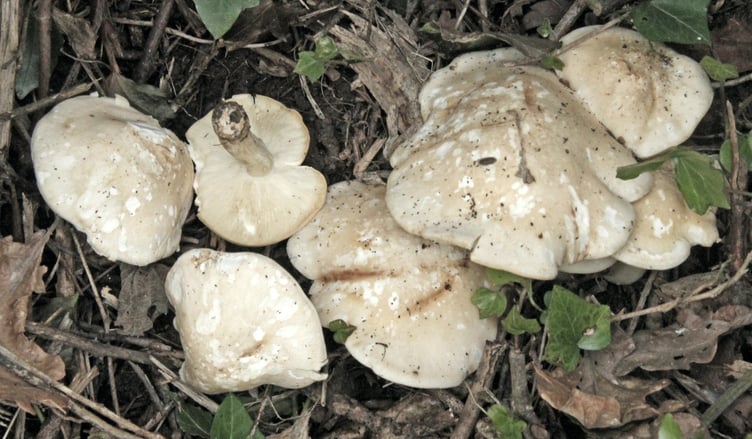WE went out to Clapper Bridge for a look around at the wild flowers and on the way down the hill from Blunts, towards the bridge, there is an old building that hasn’t been lived in for probably 50 years.
It was called Enquire The Way and when we lived near there when I was a boy, I can remember talking to the couple that farmed what must have been a small-holding.
The house has fallen into disrepair but on the grassy bank beside the road I can remember seeing Early purple orchids growing, so naturally we stopped in the gateway opposite the house for me to search for orchids.
However, I only found one Early purple and, as they are one of the first to flower in April, I can only assume they are going to be late this year.
Their green leaves with dark, almost black, spots on them appear several weeks before the plant sends up its stalk which will be topped with a spike of pinkish purple flowers.
A plant with the fancy name of Jack-by-the-Hedge, that also has the name Garlic mustard, is in bloom now with its small white flowers.
It likes to grow in the roadside hedge creep and by crushing and sniffing a leaf will tell the picker how it got its garlic name.
These leaves were used from the 17th century onwards to flavour salted fish, but nowadays it has graduated to being an addition to spring salads.
On a walk around the path fields I saw lots of Lords and Ladies.
No, they weren’t on a day trip from Downton Abbey, these were the ‘flowers’ of the wild Arum plants.
The purplish cylindrical flower-head called a spadix is surrounded by a large curved leaf. During the 16th century it acquired the name Cuckoo pint.
There are lots of Red campions out in bloom now and it’s not unusual to find the occasional white-flowered campion growing in among the reds.
In fact, the reds can be seen for most of the year on hedges and I think they sometimes cross with whites to produce hybrids with flowers in all shades of pink.
On a walk down around Trehunist, we saw lots of Honesty flowers in and around the hamlet.
When these lovely purple, four-petalled blooms fade, they turn into large, round seed pods that are translucent and look a little like moons, hence their other common names such as Silver dollar, Moonwort and their Latin name Lunaria annua.
Whilst we were down that way, we came across a clump of St George’s mushrooms growing among Ivy leaves on a hedge.
These are so named as they usually appear around St George’s Day, which is April 23, and the ones we found had been on the hedge for some time as their white caps and gills were losing their brilliance.
On our way home we were ‘buzzed’ by a brilliant Orange tip butterfly that was flying to and fro along the hedgerow.
One of the first butterflies to appear in spring and this was a male, as females don’t have the coloured wing tips and are easily mistaken for one of the white butterflies.
With the sun still bright when we arrived home, we decided to have a cup of tea in the garden and right there on the garden table was a Green shield bug taking in the sun.
It posed on the edge of the bench and obviously wanted to get its picture taken.
Although it looks fearsome, this little bug is less than half an inch in length and harmless.





Comments
This article has no comments yet. Be the first to leave a comment.